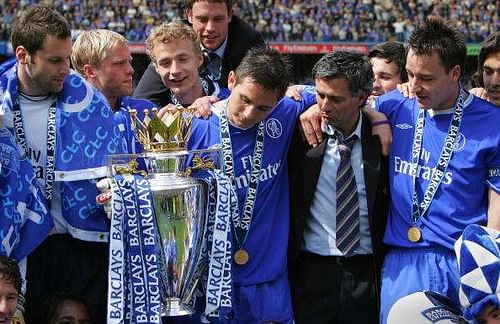
Tactical systems explained: 4-3-3
Jose Mourinho infamously introduced himself to Chelsea fans as ‘The Special One’ that fateful summer of 2005 and those words would prove to be prophetic. He took a perennially underachieving team to their first league title in 50 years. A large part of that success can be attributed to his use of the 4-3-3 system, back when not many used to great effect.
Also Read: Tactical systems explained: 4-4-2
Now, though, it is still a very popular system at some of the world’s greatest clubs. It benefits players who are very intelligent on the ball and off it, allowing them the freedom of expression in a system that prioritises slick and quick ball movement as a means to creating consistent scoring opportunities.
It is usually implemented in one of 2 variations – The 2+1 midfield, with 2 players sitting deep, and the 1+2 midfield, with 2 players further forward. That Chelsea team had two world-class midfielders Makelele and Lampard, a duo that will forever go down in folklore as legends of the game.
Strengths
The two wide forwards in this system are usually so high up the pitch that they nullify the threat of opposition full-backs by pinning them in their own half. As long as they stay in these advanced positions it makes it very risky for the full-backs to push up, limiting the attacking from wide areas against your team.
The advanced 3 also constantly interchange positions making man-marking almost impossible. This also makes defending chaotic for the opposition, not knowing when to follow your man and a simple feint to draw defenders away. The forwards work very well in splitting up the center-backs, giving the center-forward more space and time to work inside the box and put away opportunities that come his way.
Playing 3 in midfield, one being defensive minded and the other 2 taking up the all-round box-to-box role, allows for domination of midfield possession against teams playing only 2 in the center of the park. Because the midfield holds on to the ball so well, it gives the full-backs the license to bombard forward without having to worry about the threat of conceding counter-attacking opportunities. The system also easily alters to a 4-1-4-1 in those situations where the team has to soak up heavy pressure.
A team that executes this system to perfection would be the current Barcelona side. Sergio Busquets patrols the deep midfield while Andres Iniesta and Ivan Rakitic dictate play masterfully further forward. The front three of Luis Suarez, Neymar and Lionel Messi are as good as it can possibly get. The proverbial nightmare for opposition defenders, their constant shuffling of positions and runs behind the defence has led to them becoming the best free-scoring team of this generation.
Weaknesses
One of the major requirements to this system is having the right personnel to implement it. They must have first and foremost speed of thought in terms of positioning and distribution.
The center-forward has the responsibility to regularly take the ball and then bring in his attacking team-mates into the game from their wider starting positions. With the exception of a few, performing this role consistently while coming up against elite-level defenders is not something that is very rewarding.
Another big requirement would be how good your deepest lying midfielder is at recycling the ball and winning back possession. Teams that have reaped genuine success with this system are those who can boast of a world class defensive midfielder within their ranks.
Makelele, Mascherano, Busquets are all players who shielded the defence immaculately in this system, allowing for more freedom for the forwards further up the pitch. They also allow for their midfield partners to regularly join attacks and throw more bodies forward in an attempt to overwhelm opposition defenses.
Not having these kind of players can result in poor execution of plans and a breakdown in the system due to a lack of coherence between any of the players.
Conclusion
The 4-3-3 has been used heavily in the past decade, with many teams using it to varying degrees of success. It is a system, if implemented with precision, offers very few counters to the opposition.
The fluid attacking play and compact defensive structure make it a joy to watch and very difficult to break down at the same time. However, it would be imprudent to try to implement it without having the right blend of players; the team is of course, only as strong as its weakest link.
More Football news, transfer rumours, analysis and features at Sportskeeda.com



